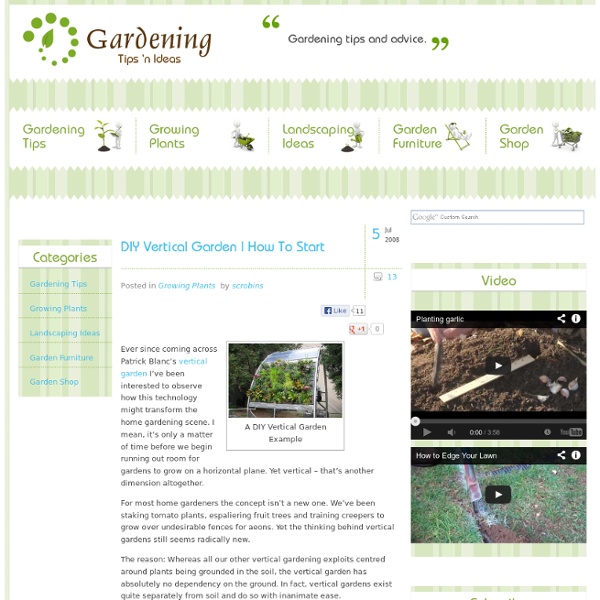Gardening Tips ‘n Ideas

Central Texas Gardening Database
Click on the plants from the list to see its facts and description: (Although no plants made this list unless they are good ones for Central Texas, the plants with an * are the very best you can get for a successful Texas Garden.) After several requests from my readers, I have added a warning sign to those plants that are considered invasive. Althea: This is a small tree with hibiscus-like flowers in the summertime. Apple: Plant apple trees in full sun and enjoy their spring blooms and a harvest of crisp, fresh apples. Catalpa: Large, deciduous tree with showy flowers in the spring and big, pretty leaves. Carolina Buckthorn: A nice deciduous tree for sun to shade, with a height of 15 to 30 feet. Chinese Photinia: One of my favorite trees. Crape Myrtle: These come in two sizes, this one is a tree, the other a shrub. Desert Willow: A 15'-30' deciduous tree with tubular pink to purple flowers and willow-like leaves. Eve's Necklace: You should know about this tree! Nandina: Warning!
Growing Mushrooms: Video Series
How you will go about growing mushrooms will vary depending on what you want to do with those mushrooms when everything is said and done. Learn about growing mushrooms with help from experienced mushroom professionals in this free video series. How to Grow Mushrooms to Eat Growing mushrooms to eat requires a few key changes to the process you would go through if you were just growing mushrooms under normal circumstances. How to Grow a Mushroom Plant Growing mushroom plants is something you can do using a very specifically designed kit. How to Grow Mushrooms in the Dark Just because you have an area without a lot of sunlight doesn't mean you can't still grow mushrooms. Sauteed Mushrooms in Red Wine Over Steak There are few delicacies more delectable than sauteed mushrooms in red wine over steak. Mushroom Fennel Salad Mushroom fennel salad is a delicious treat that the whole family will love. How to Make Mushroom Prosciutto Spinach, Mushrooms, Walnuts & Bow Tie Pasta Salad
Make the Most of Your Garden by Choosing Plants Wisely
Let’s talk plant basics for those novice gardeners who are sitting in their cozy armchairs thumbing through seed catalogs and feeling completely overwhelmed. Know your options An annual plant grows for one season and then it’s done. A perennial plant grows for more than one season. Annuals (and tender perennials) You’ll plant these in your garden—either as seeds or transplants—every year, most often in the springtime (though, yes, fall planting can happen for some of these, too). Once and done These are the plants that you sow, grow, and harvest in their entirety. Radishes reach maturity very quickly. Cut and come again As the name implies, you can cut—or harvest—a portion of these crops without harvesting the entire plant. Lettuce grows as a head or loose leaf. Continual harvest These plants typically spend many months in your garden. Tomato plants take 50-60 days to start providing fruit, but once they do, they tend to be prolific. Perennials This is by no means a comprehensive list.
Willis Orchard Company | Buy Fruit Trees | Berry Plants | Grape Vines | Nut Trees | Shade Trees
Planting Guide | Your Garden Solution
Planting Guide (Based on USDA 2012 Hardiness zones of between 6b and 7a) Below is a helpful planting guide for use in square foot gardens. Note that the number beside the vegetable indicates the # that can be planted in one square foot. Remember, in a 4×4 square foot garden, there are 16 designated squares, outlined by the grid on top of your garden. Early Spring Plant March 20-April 15 Sugar Peas-9 per square foot Kale-4 Onions-16 (small) or 9 (medium) Radishes-16 Lettuce-4 Carrots-16 Red Beets-large (9 per square) small (16 per square) Early Cabbage-1 Broccoli-1 Brussel Sprouts-1 Cauliflower-1 Garden Peas-9 Spinach-9 Swiss Chard-4 Strawberries-4 Chive-16 Mint-1 Mid-Spring Plant April 15- April 30 Early Tomatoes (vine type)-1 per square foot Early Sweet Corn- 4 Cabbage-1 Potatoes-4 Parsley-4 Oregano-1 Late Spring Plant May 1-May 15 Lima Beans-9 per square foot Tomatoes (vine type)-1 Sweet Corn-4 Summer squash-1 Cucumbers-2 Green/Yellow Beans (bush type)-9 Cilantro-1 Early Summer Plant May 15- June 15 Eggplants-1 Pumpkins-1
Plant Spacing - My Square Foot Garden
Here is a chart of plants and how many to plant per square. See below for explanations on how to calculate and sample pictures. To calculate how many plants per square, look on the back of the seed packet–ignore the row spacing, just look at the plant spacing: 3″ plant spacing = 16 per square 4″ plant spacing = 9 per square 6″ plant spacing = 4 per square 12″ plant spacing = 1 per square 3″ plant spacing with trellis = 8 per square Some plants require more than one square. 18″ plant spacing = 4 in 9 squares 24″ plant spacing with trellis = 2 squares 24″ plant spacing with cage = 4 squares
Related:
Related:



